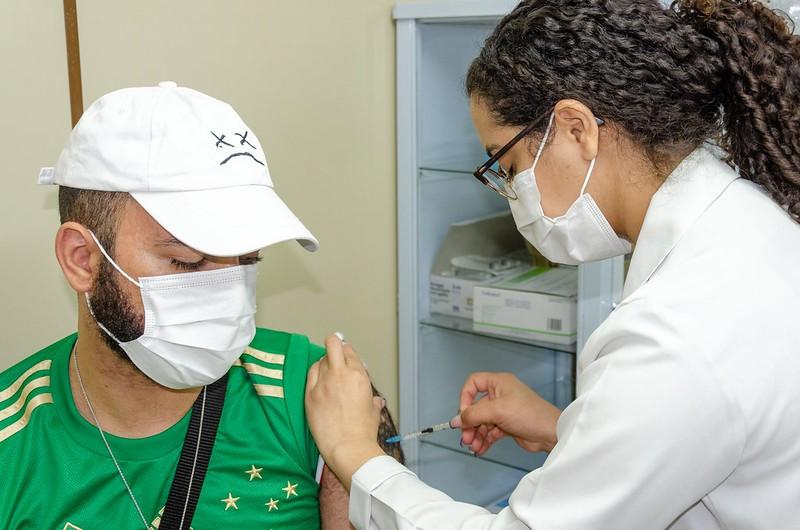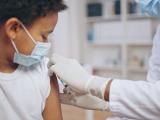As a whole, the world's COVID-19 cases remained stable for the fourth week in a row, though two regions—the Americas and the Western Pacific—reported rises, according to a weekly update yesterday from the World Health Organization (WHO).
In the United States, cases have also stabilized after a post-Thanksgiving bump, with the nation's cases this week passing the 100 million mark. Meanwhile, federal officials are finalizing plans to strengthen the pandemic response, based on elements included in the omnibus budget that lawmakers are considering.
Hot spots in Latin America; Europe braces for holiday rise
Last week, the WHO received reports of more than 3.7 million cases, similar to the week before. However, regional patterns reflect a mixed picture in the lead-up to the Christmas holidays. Cases were up 18% in the Americas compared to the previous week, with cases up 8% in the Western Pacific region.
For deaths, more than 10,400 were reported to the WHO last week, with levels decreasing or stable in all world regions, except for the Western Pacific.
At the subregional level in the Americas, South America and Central America are reporting rising cases, according to the latest epidemiological report from the WHO's Pan American Health Organization (PAHO). In South America, Brazil and Argentina are reporting steady rises in case numbers.
In the Western Pacific region, much of the rise is due to ongoing brisk activity in Japan, as well as South Korea. Though official case numbers for China don't show the country contributing to the regional rise, media reports say surges are under way in several major cities, including Beijing and Shanghai, with reports of rising pressure on health facilities and mortuaries. China recently lifted its "zero COVID" policy and has revised how it counts cases and deaths, which may understate the true impact of the disease.
Elsewhere, the European Centre for Disease Prevention and Control (ECDC) said today in its latest COVID update that cases in people ages 65 and older rose 7% last week compared to the previous week, with 15 of 24 countries showing sharp increases.
Increased transmission is impacting hospitals, with 11 of 21 countries reporting increases in hospital occupancy or intensive care unit (ICU) admission, the ECDC said.
"Increased inter-generational mixing during the year-end holiday season is likely to increase the exposure of vulnerable groups to respiratory viruses," the ECDC said, adding that the holidays will also bring changes in reporting, testing, and health-seeking behaviors, which could complicate interpretation of epidemiological data.
US cases level out; feds look to bolster preparedness
Following a rise in COVID indicators after Thanksgiving, US patterns seem to have leveled out, according to tracking from the Centers for Disease Control and Prevention (CDC) and the Washington Post. The 7-day average for new daily cases is 66,200, a decline of 0.2% compared to a week ago. By the same measure, hospitalizations were up 3%, with deaths down by 12%, according to Washington Post tracking.
For the week ending Dec 15, nearly 48,000 more COVID cases were reported in children, the second consecutive weekly rise, the American Academy of Pediatrics said in its latest weekly update. Since Dec 1, COVID cases in kids are up 66%.
In legislative developments, efforts are under way to improve the nation's pandemic response, according to provisions of the $1.7 trillion federal budget bill that Congress is expected to vote on by the end of the week. The Senate included the bipartisan Prevent Pandemics Act in its version of the bill, which would—for example—require the CDC to update its strategy every few years and give the Department of Health and Human Services (HHS) authority to more quickly ramp up testing, according to the Washington Post.
Also, the funding package includes a new White House Office of Pandemic Preparedness and Response Policy, which would be led by a director appointed by the president and have 25 staff members, according to Stat, which said the office's responsibilities would be to prepare for pandemics and other biological threats.
In other US developments, Roche's IV treatment tocilizumab, a monoclonal antibody treatment for hospitalized COVID patients, has received full approval from the Food and Drug Administration (FDA) for use in adults, the company announced yesterday. It is the first FDA approval for a COVID monoclonal antibody. The FDA issued an emergency use authorization (EUA) in June 2021 for use of the drug in hospitalized adults and children as young as 2. The EUA is still in place for children ages 2 to 18.
Also, the CDC this week issued a Health Alert Network (HAN) notice to clinicians, alerting them that the majority of Omicron sublineages circulating in the United States have reduced susceptibility to the monoclonal antibody bebtelovimab and to the monoclonal antibody combo Evusheld (cilgavimab and tixagevimab) used to prevent infection in vulnerable patients.



















